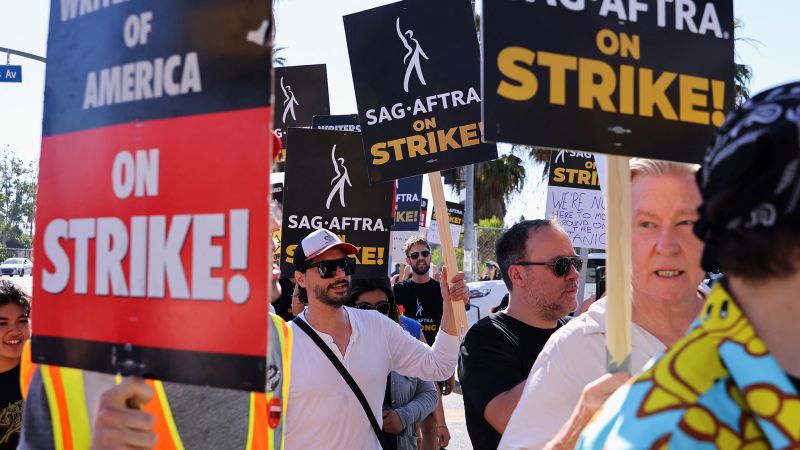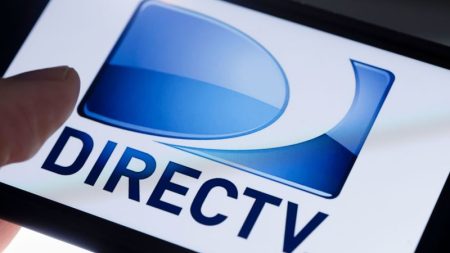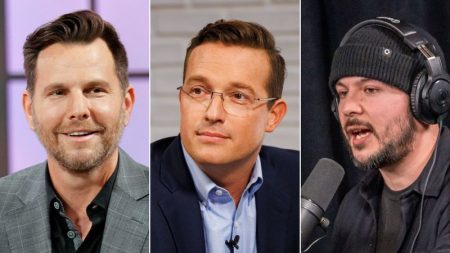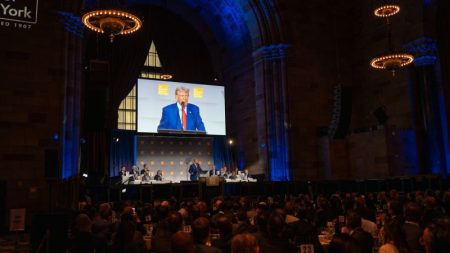How many actors does it take to make the movies and shows produced by studios and streaming services? SAG-AFTRA, the actors union that has had 160,000 members on strike since last week, is afraid that artificial intelligence will lead to far fewer employed actors in the future.
The negotiations between actors and the major studios and streaming services that create movies and television have broken down over a few issues, but possibly none more contentious – and more unknown – than the use of AI.
In Hollywood it might seem like AI would be a bigger issue for writers than actors, especially with ChatGPT being used to write everything from law school and business school papers to legal briefs, with varying degrees of success. And winning limits on AI is an issue for the Writers Guild of America, which has been on strike against the same studios and streaming services since May 2. But SAG-AFTRA and its striking members are terrified of the implications for AI as well.
“If we don’t’ stand tall right now, we are all going to be in trouble. We are all going to be in jeopardy of being replaced by machines,” said Fran Drescher, president of SAG-AFTRA at a press conference last week.
Computer-generated imagery, or CGI, to create virtual actors and extras is somewhat old hat in Hollywood. But just as computers allowed replacing animation artists who used to draw 24 frames of artwork for each second of film, AI allows much easier, and cheaper, use of CGI to generate performances by actors who aren’t there. Thus SAG-AFTRA says the studios want to use AI to eliminate acting jobs.
Using AI to create performances that never took place is not just hypothetical. It is already happening. But AI-generated deepfakes, such as a series of convincing but totally fabricated videos of a Tom Cruise doppelganger, are mostly found on social media, not in movies or shows from the studios.
But the same technology could easily be used to replace the actors in background roles in studio and streaming productions — the ones listed in the credits with titles like “second police officer” or “waiter in the restaurant.” These roles generate a huge number of the jobs that SAG-AFTRA members depend on to pay their bills.
As of now, the two sides don’t even agree on what proposal the studios have on the table about AI use going forward. The Alliance of Motion Pictures and Television Producers (AMPTP), which represents the studios and streaming services in negotiations, said its proposal provides new AI protections for actors, and that it “protects performers’ digital likenesses, including a requirement for performer’s consent for the creation and use of digital replicas or for digital alterations of a performance.”
But the union insists the threat to jobs is very real, and that the studios assurances are not worth nearly as much as management claims.
“They propose that our background performers should be able to be scanned, get paid for one day’s pay and their company should own that scan, their image, their likeness, and to be able to use it for the rest of eternity in any project they want with no consent and no compensation,” said Duncan Crabtree-Ireland, the union’s chief negotiator.
AMPTP denies that’s what was in its proposal, saying their likeness would only be allowed to be used “in the motion picture for which the background actor is employed.”
SAG did not say what its counterproposal was. But it is clear actors don’t want their likeness to be used by the studios without their permission, input, and, importantly, compensation.
Experts say whatever deal is reached on AI is not going to lead to an outright ban on its use to create virtual actors in films and movies. More likely it will set up rules for its use, and compensation minimum for actors whose voice or image is manipulated and inserted using AI.
“I think we’re far past that point,” said Anthony Palomba, professor at the University of Virginia’s Darden School of Business and an expert in entertainment science and media, referring to an AI ban. “The studios are hesitant to give any limits on using AI. The actors know the technology exists, they don’t know what they’ll use them for.”
Using CGI to generate virtual performances has been done in Hollywood for many decades, producing crowd shots in sports movies and warriors in battle scenes.
There was even the occasional use of CGI more than 20 years ago to create close-ups of speaking characters when the actor wasn’t available. CGI was used to film a final scene of Nancy Marchand playing Tony Soprano’s mother in HBO’s “The Sopranos” in 2001, even though she had already passed away before the scene was written.
But the pace of change and advancement in AI technology is one of the things making it so difficult to reach a deal, according to the experts.
“This technology advancing so rapidly, that it’s very hard to craft a meaningful set of details and guidelines that won’t be outdated in a short period of time,” said Rowan Curran, an analyst at Forrester and an expert in AI and machine learning.
“The real anxiety and emotions are not just what’s happening now, but an eye towards the future,” said Joshua Glick, visiting professor of film and electronic art at Bard.
Asked if writing or acting jobs are most at risk from AI, the University of Virginia’s Palomba responded, “I’m not sure anyone knows the answer to that. If they say they do, they’re lying to you.”
All the other contentious issues in these negotiations basically boil down to dollars and cents. But the fight over AI is about control and the techniques used in future films and shows, and a difficult to calculate impact that will have on jobs. Finding a middle ground could prove especially difficult to do for that reason, according to experts.
“I think that’s hard with AI because they’re negotiating about something that no one is certain what the impact will be years from now,” said Andrea Schneider, a professor at Cardozo Law School and expert in negotiations and conflict resolution.
However this issue comes out in these two strikes, it won’t be the last time it comes up in labor negotiations. As many as 300 million full-time jobs globally could be automated in some way by the use of AI, according to an estimate from Goldman Sachs.
“The actors and writers, they’re kind of a canary in the coal mine,” said David Gunkel, a communications professor at Northern Illinois University who tracks AI in media and entertainment. “They’re confronting this first, engaging the question long before the UPS drivers are.”
Read the full article here




